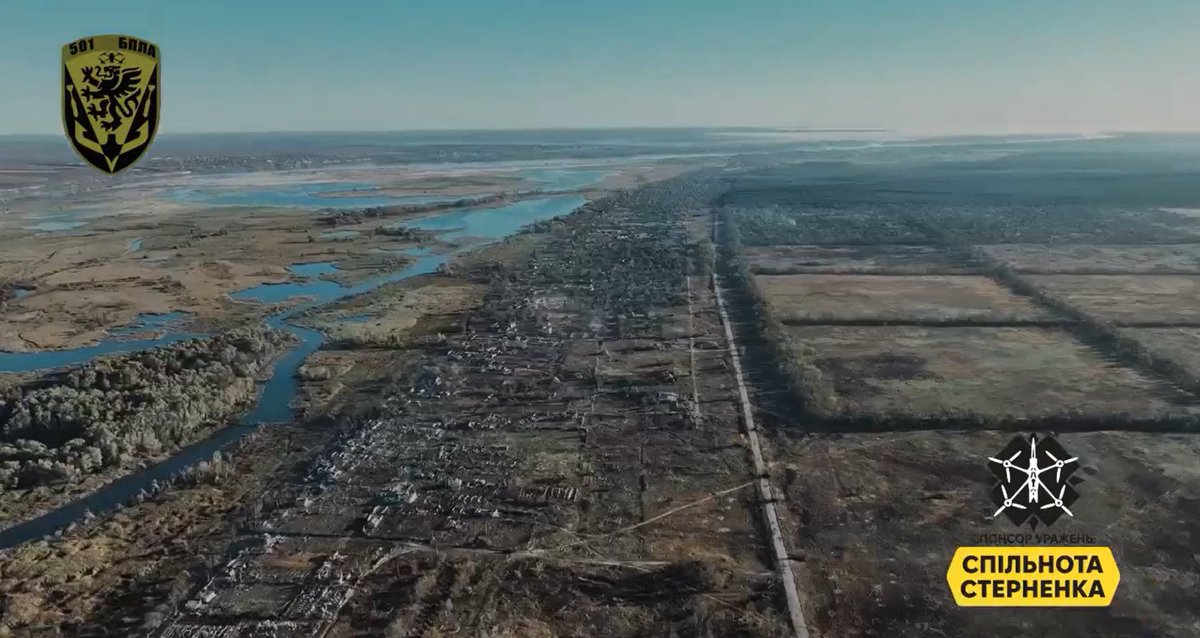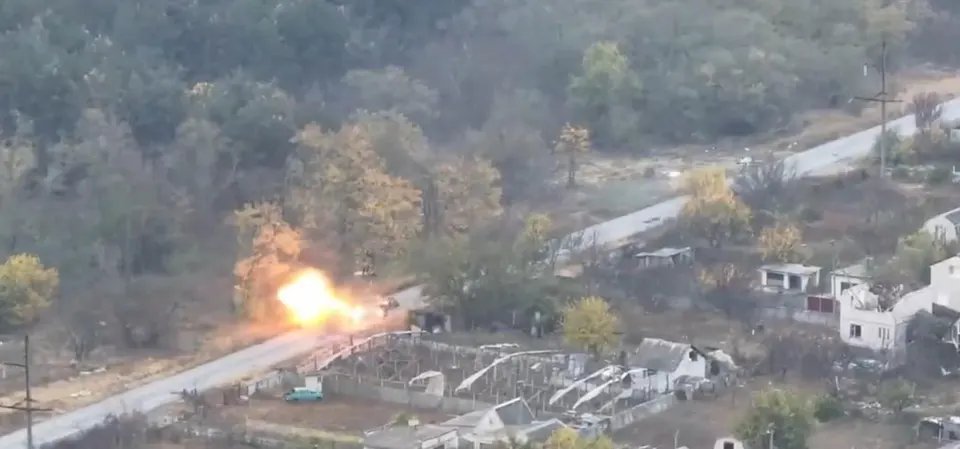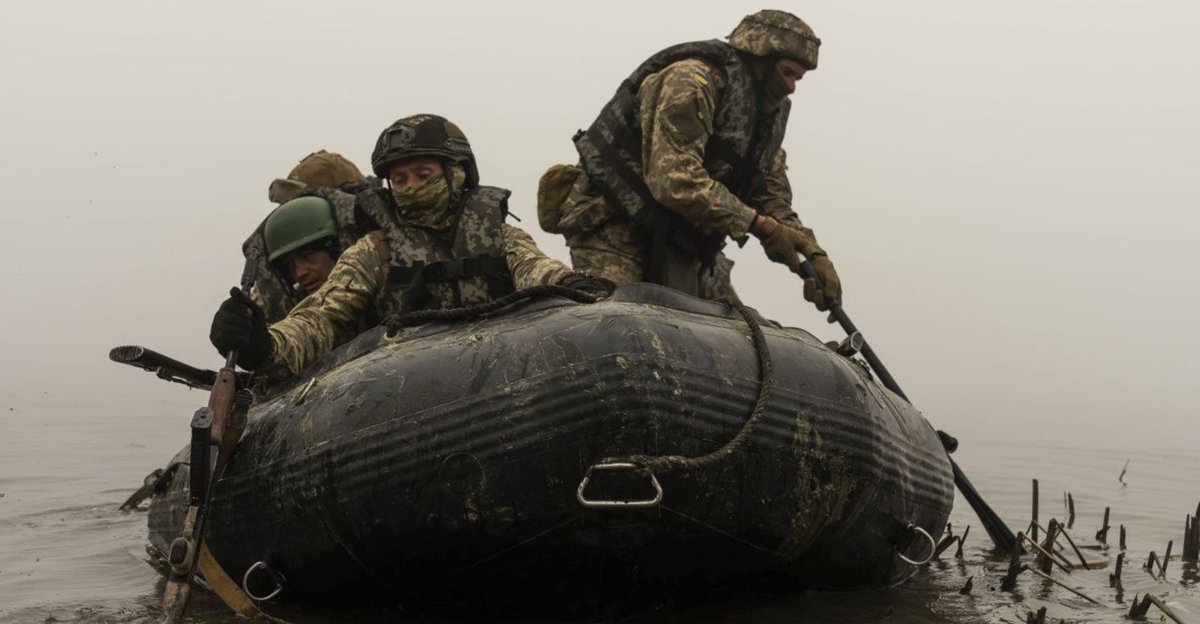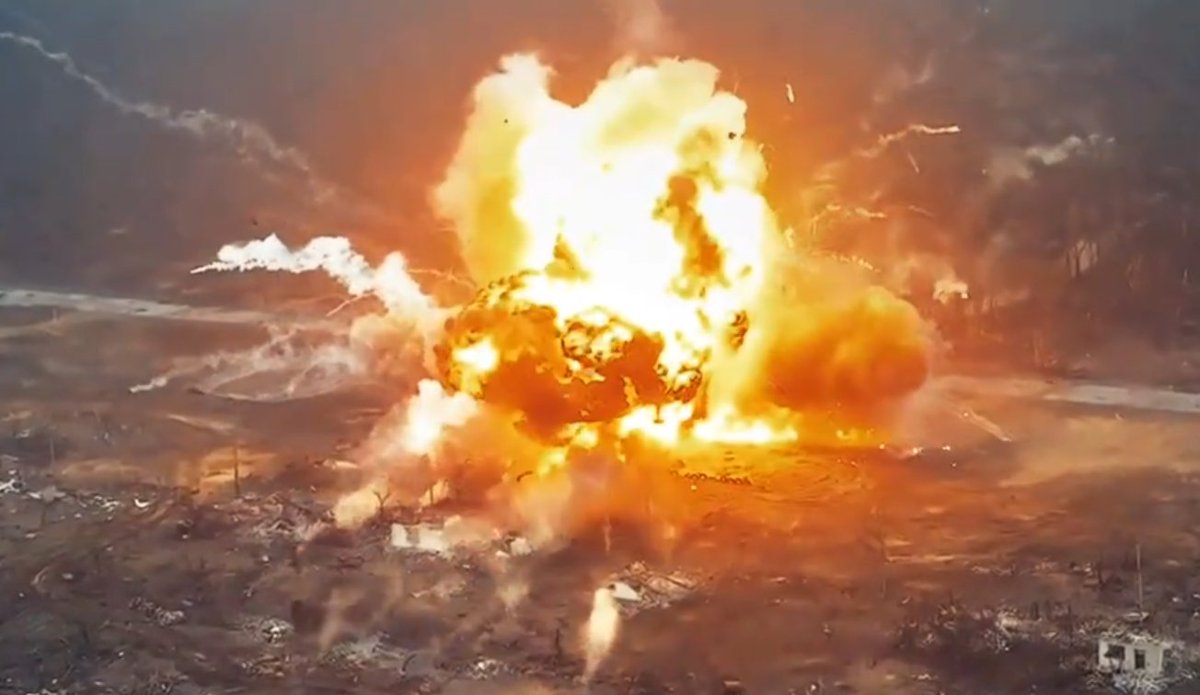"In many ways, the battle is the war in miniature."
A few thoughts on Krynky in light of recent reports of Ukrainians pulling out of the village.
I wrote a short piece on the battle for my employer. It's in Finnish but it translates nicely.
1/
hs.fi/maailma/art-20…
A few thoughts on Krynky in light of recent reports of Ukrainians pulling out of the village.
I wrote a short piece on the battle for my employer. It's in Finnish but it translates nicely.
1/
hs.fi/maailma/art-20…
"Hell along the river"
On both sides the battle ends up looking like a political objective made military neccesity.
For Ukraine, the initial river crossing didn't create the kind of a unified bridgehead that was needed for follow on operations.
2/
On both sides the battle ends up looking like a political objective made military neccesity.
For Ukraine, the initial river crossing didn't create the kind of a unified bridgehead that was needed for follow on operations.
2/
Ukraine attempted to gain a foothold near Pischanivka, Pidstepne, Kozachi Laheri and Krynky. Had they succeeded in all places, the bridgehead may have been wide enough to create an actual threat to Russia.
However, all other crossings were defeated except the one in Krynky.
3/
However, all other crossings were defeated except the one in Krynky.
3/

For chances of any larger success Ukraine should've timed the assault to coincide with the fighting in Robotyne. They didn't.
Ukrainian officials gave out of context comments about 3-8 kilometer deep buffer zone on the Dnipro, and having made it 70% of the way to Crimea.
4/
Ukrainian officials gave out of context comments about 3-8 kilometer deep buffer zone on the Dnipro, and having made it 70% of the way to Crimea.
4/
In reality, the Ukrainian marines were stuck scraping defensive positions in marshy ground around the village of Krynky. The bridgehead was, at best, a few kilometers wide and 500 meters deep.
Resupplying the area was extremely hard.
5/
Resupplying the area was extremely hard.
5/

With the possibility of success exhausted, and the failure of the summer offensive, maintaining the bridgehead became a political goal.
Unable to admit failure, and needing propaganda victories, Ukraine, once again, turned to spending lives rather than giving up land.
6/
Unable to admit failure, and needing propaganda victories, Ukraine, once again, turned to spending lives rather than giving up land.
6/
The outspoken goal was now to tie up and destroy Russian forces.
The Russians gleefully obliged, as always. Destroying the bridgehead rather than containing it, became, in turn, a political objective for the Russians.
Krynky turned into a grueling battle of attrition.
7/
The Russians gleefully obliged, as always. Destroying the bridgehead rather than containing it, became, in turn, a political objective for the Russians.
Krynky turned into a grueling battle of attrition.
7/

Russians threw men and material at the bridgehead with no consideration for their survival. In just over 4 months of fighting the Russians lost over 200 pieces of heavy equipment.
There is no solid data on the total Russian lives lost, but it must've been immense.
8/
There is no solid data on the total Russian lives lost, but it must've been immense.
8/
Despite the ceaseless attacks and hundreds of bombs dropped on the village the Russians are unable to make headway. Ukrainian artillery and FPV fire is murderous.
It takes the Russians 9 months to push the Ukrainians out of the bridgehead.
9/
It takes the Russians 9 months to push the Ukrainians out of the bridgehead.
9/

Ukrainian soldiers call Krynky "hell" and "purgatory". Crossing the river under constant Russian surveillance and artillery fire is openly called "suicidal" from the first months of the operation onwards.
The soldiers themselves question the rationale of the battle.
10/
The soldiers themselves question the rationale of the battle.
10/

The Ukrainians lose over a 1000 men dead and missing, most of the missing presumably left behind in Krynky or drowned in the Dnipro during the precarious crossings.
It's likely that the ratio of KIA to WIA is significantly worse in Krynky than anywhere else on the frontline
10/
It's likely that the ratio of KIA to WIA is significantly worse in Krynky than anywhere else on the frontline
10/

In the end neither side achieves much in Krynky.
For the Ukrainians, the reports coming from Krynky, and the disbelief of analysts, quickly overshadow any propaganda purpose the battle might've had.
It doesn't stop Russia from launching an offensive in Avdiivka either.
11/
For the Ukrainians, the reports coming from Krynky, and the disbelief of analysts, quickly overshadow any propaganda purpose the battle might've had.
It doesn't stop Russia from launching an offensive in Avdiivka either.
11/
For Russia, the immense lossess of manpower and equipment for no gain are humiliating. Despite being able to conduct offensives in Avdiivka, the troops used to attack Krynky are away from more important directions.
12/
12/

Now the battle is over.
DeepState says the last Ukrainian positions were overrun on the 17th of June.
Ukraine has lost what it gained in the fall of 2023. The Marines have moved to Kharkiv.
Russia has reduced the bridgehead on the Dnipro and can move troops elsewhere.
13/
DeepState says the last Ukrainian positions were overrun on the 17th of June.
Ukraine has lost what it gained in the fall of 2023. The Marines have moved to Kharkiv.
Russia has reduced the bridgehead on the Dnipro and can move troops elsewhere.
13/
The officials of both sides seem to be content on letting the end of the battle fly under the radar.
The Ukrainians stayed silent about the loss of Krynky for almost a month, while the Russians likely don't want to announce the "liberation" of Krynky for a third time.
14/
The Ukrainians stayed silent about the loss of Krynky for almost a month, while the Russians likely don't want to announce the "liberation" of Krynky for a third time.
14/
To me the decision to fight Krynky will go on to the list with Severodonetsk and Bakhmut.
It was a operation with no hope of success from the get go that Ukraine did not need to fight, especially when it was suffering from a manpower and ammunition deficit.
15/
It was a operation with no hope of success from the get go that Ukraine did not need to fight, especially when it was suffering from a manpower and ammunition deficit.
15/
Both Ukraine and Russia expend immense resources they can ill-afford to lose to achieve diminutive goals.
In the end all that remains in Krynky are the cratered ruins of a tiny fishing village. Once the smoke clears, neither side can truly claim victory.
16/16
In the end all that remains in Krynky are the cratered ruins of a tiny fishing village. Once the smoke clears, neither side can truly claim victory.
16/16
17/16
• • •
Missing some Tweet in this thread? You can try to
force a refresh














